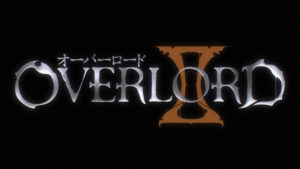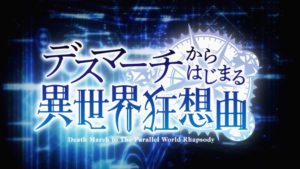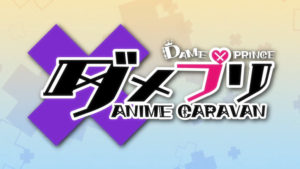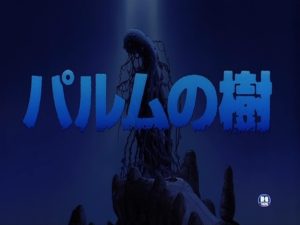I’ve now been playing this game for the last month or so, and have gotten nine characters through the default game content (and one of those through the expansion content). The simplest way to describe it is: Titan Quest with a Diablo aesthetic.
It’s a bit easier than Titan Quest though (you won’t have to worry about certain enemies being completely immune to your damage type) and seems to have a smaller pool of items. There’s some added complexity however in the form of the Devotion system, which allows you to enhance your base class combination in a ton of different ways and can inspire builds all on its own, and a few small roleplaying aspects in regards to the quests. So it’s a bit of a toss up which game is ‘better’, but I’m leaning toward this one because damage-immune enemies are a pain.
The characters I’ve used so far are almost evenly split between builds I found on the official forums and ones I was inspired to make based on certain endgame items or Devotions. I’ll list them similar to how I did the Titan Quest ones earlier, in order of Act 4 completion (or close to it; the ordering of the middle few might be off):
The first one to complete the normal game was not the first character I created, as the order was switched around for faction reputation-related reasons. I basically made them because I wanted a Retaliation build similar to the Templar I used in TQ without the annoyance of having to wait for enemies to kill themselves. So I focused on Piercing, Bleeding, and Physical damage centered around the Counterstrike and Circle of Slaughter abilities with Retaliation damage as a secondary. In retrospect this was not ideal and, despite the fact that they managed to complete the expansion content without issue (the old belt/amulet/gloves were just switched out), I’m going to respec it before heading into Elite as a more Bladedancer-ish build. I may end up re-purposing the retaliation aspects into a more fitting class combo.
Next was the second character I created, an Apostate. It came about from both being impressed by how powerful the Skeletons were and simply wanting to do something with this particular combo. While it’s a straight-forward pet build and the pets are fabulous at killing stuff already, I realized while playing some other characters that it would be better off trading most of the gun-based skills for the resistance reduction and defense of Spectral Wrath (since the Skeletons do Vitality damage), so now the desired end result looks like this.
The first created (which in turn inspired the one above) was one which had a very detailed and well written-up post on the forums; a Cabalist build centered around Ravenous Earth. While that was quite effective, I liked the look of the melee-variation better and so built my iteration in that direction. To give you an idea of how good this build is, it actually looked like it had a shot at killing Mogdrogen’s Avatar in Act 4 at under level 60 (I got him to ~60% health before I messed up and died).
The Deceiver build I used was inspired by the Abomination Devotion. That’s it. I saw that constellation’s abilities and wanted something that would be effective with it and so theory-crafted this end result. I also thought up a second, Flamethrower-centric build for the class combo… but I don’t think I’m ever going to actually play it.
Another forum build I liked happened to be a Cadence-centered Deathknight, though I thought it might ultimately work better with Beronath’s Shard. I finished Act 4 with it before I found the Shard’s blueprint though, so my version is currently more in-line with the original (note that the weapon is from the Blademaster’s Act 6 run and I was using a nearly as effective Soulsplitter in Act 3). What stands out most about this build, besides the insane Cadence-damage output, is that Spectral Wrath alone passively massacres most of the enemies that attack you.
The Spellbinder came about simply because I found a ton of gear that enhanced both Aether and Vitality damage. Although ultimately I want this character to make use of Drain Essence, without the Uroboruuk gear it just doesn’t do enough damage. Replicating Missile and Devastation are enough to wreck enemies though, so that’s fine for now. If it doesn’t work out I’ve got an alternate Devotion setup and an idea for a Diviner version as well (though that would probably be a bit too similar to the Apostate).
Near the end came a Reaper, which was one of the forums’ ones I modified. While far more effective against undead than a similar character I used in TQ, those enemies do tend to survive longer than others against the massive amounts of cold damage this Bone harvest-focused build can dish out.
The penultimate character was also a build I found on the forums, for a Crucible-decimating Purifier. I have not actually tried Crucible yet, but I figured I should have a character that can handle it. Regardless, they currently look like this and do indeed lay waste to large swathes of enemies.
Last was a Druid. At first this was meant to be a dual-wielder, and I in fact did play through nearly all the game up to this point dual-wielding (using the relevant Relics), but ultimately the reliance on Critical Hits along with how otherwise unhelpful the necessary Relics were to the build’s theme made me do a slight re-calibration into a more conventional caster setup. You may notice I have both Savagery and Shard of Beronath. This is intentional. Originally I just had the Shard, but then thought… why not alternate the two and have both? So I did and stuff just melts.
And that’s all the ones I’ve played so far (though I do have vague ideas for a Witch Hunter, Commando, Trickster, Magehunter, and Elementalist, along with a Tactician designed for a Hardcore playthough). You may have noticed that most of them make use of the classes provided by the Ashes of Malmouth expansion and so I obviously suggest picking that up along with the base game. While the classes alone are great, the two additional Acts it adds are sizable and add quite a bit of content.
I’ll close this with some tips (I kind of want to write up a mini-walkthrough of some sort):
- Aura damage (e.g. Night’s Chill or Spectral Wrath) will trigger equipment ‘On Attack’ effects.
- Shift-clicking in the Stash screen drastically speeds things up.
- Keep all your components and monster parts in the Shared Stash for ease-of-use across characters.
- Not every destructible item highlights; furniture for instance.
- Bookshelves in particular are worth destroying if you want to collect all the Lore.
- Most choices have only minor differences.
- The Act 1 Cultist Saboteur quest, Act 3 faction choice, and Act 4 Aetherial Witch quest being notable exceptions.
- Siding with Kymion in Act 3 is the only way to fully explore every map.
- While you can visit East Marsh and the lower levels of the Steps of Torment in Act 2, it’s most efficient to save them for Act 4.
- Same for Port Valbury in Act 3.
- There’s no reason not to play with Veteran Mode enabled (unless you’re playing some kind of Duelist gimmick build).
- Expect to reach level 60 by the end of the default game content (Normal+Veteran), and level 70 by the end of the expansion.
- Devotion Point totals for the above are 28 and 33.
- Different Acts have different enemy concentrations.
- The Act 2 areas are the only place to find Cronley enemies and also have the highest concentration of Undead.
- Act 3 has a ton of Beasts along with a great Aetherial farming area in Port Valbury.
- Act 5 is also full of Beasts.
- Act 4 (and to a lesser extent 6) is the best place for Chthonics.
- Act 6 is the only place to find Aetherial Vanguard.






